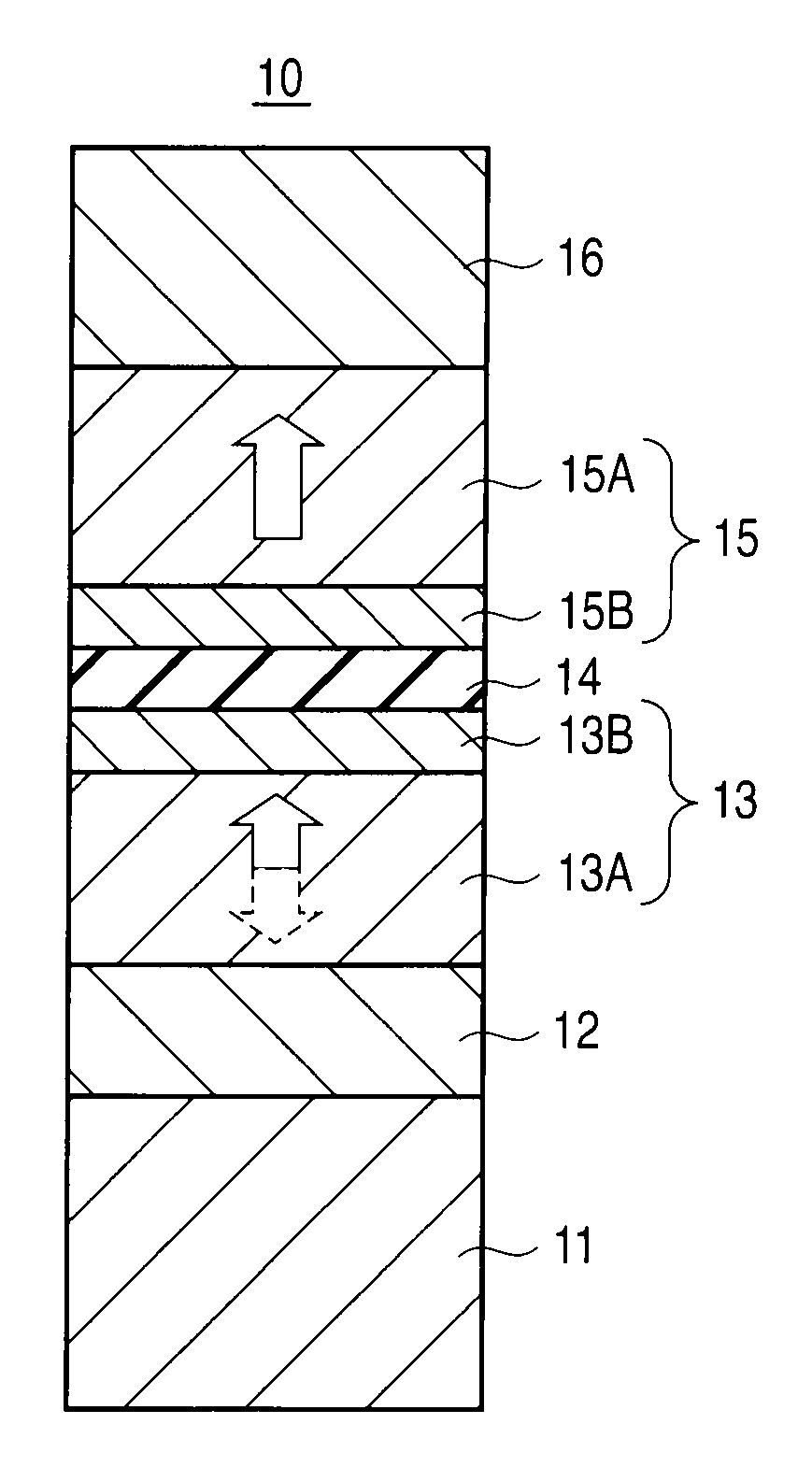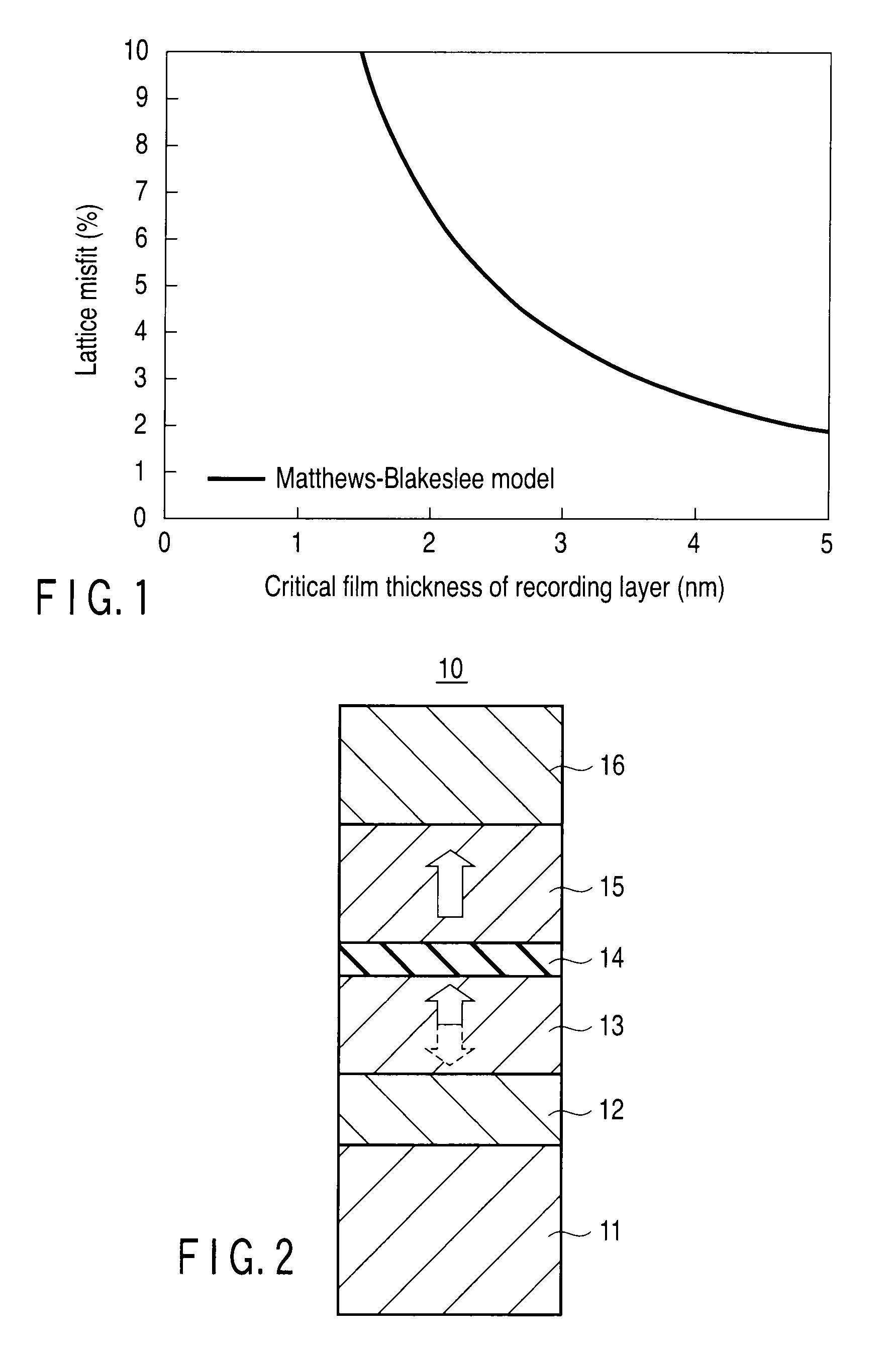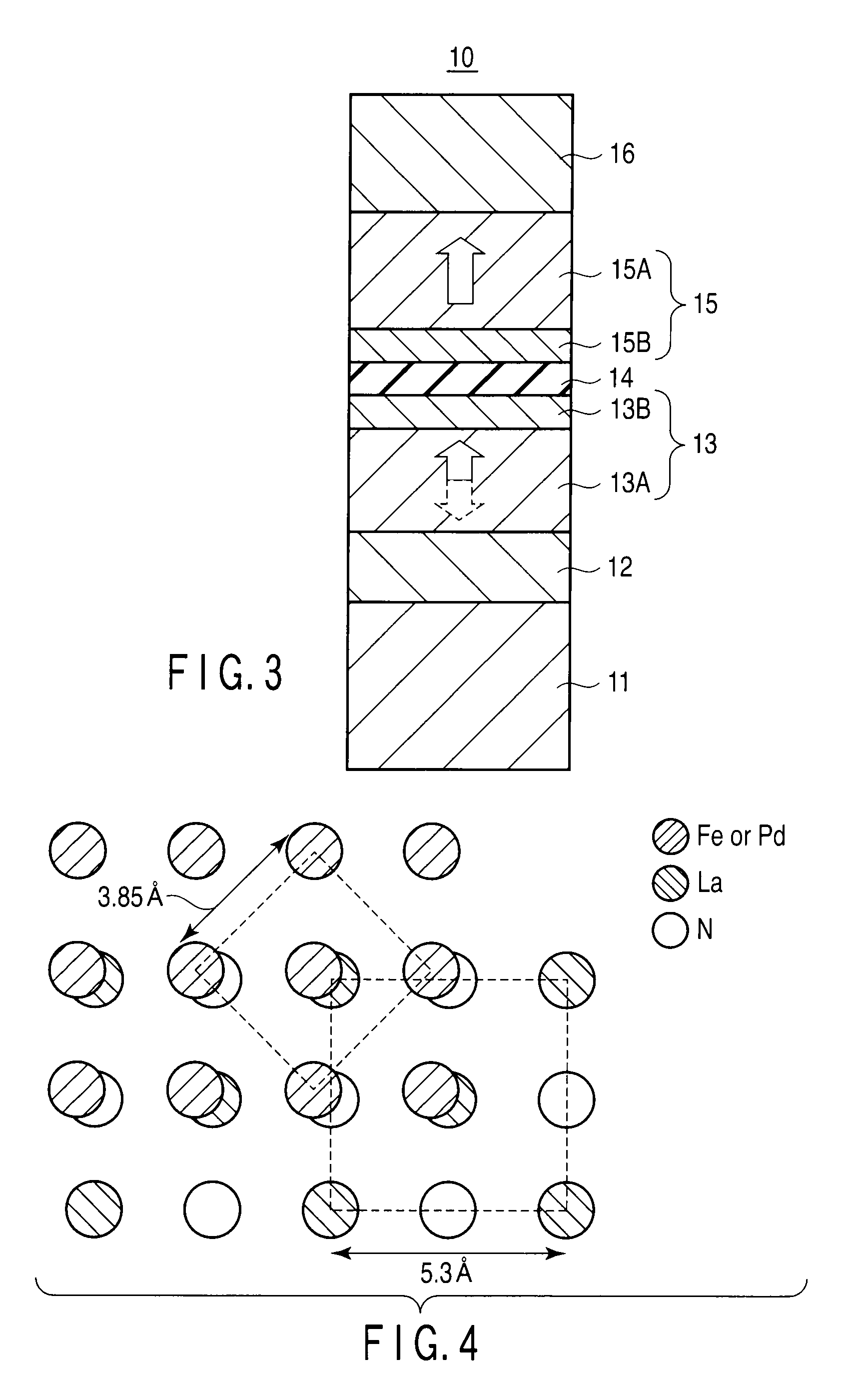Magnetoresistive element and magnetic memory
a magnetic memory and magnetoresistive element technology, applied in the field of magnetoresistive elements and magnetic memory, can solve the problems of increasing the size of the current magnetic field required for recording information reducing the current flowing through the interconnect, and difficult to supply a sufficient current magnetic field to the mtj elemen
- Summary
- Abstract
- Description
- Claims
- Application Information
AI Technical Summary
Problems solved by technology
Method used
Image
Examples
first embodiment
[1] The Structure of MTJ Element
[0052]FIG. 2 is a cross-sectional view showing the structure of an MTJ element according to a first embodiment of the present invention. In FIG. 2, arrows denote the magnetization directions. According to this embodiment, an MTJ element 10 having a single pinned layer structure (i.e., structure in which one recording layer and one reference layer are stacked via a non-magnetic layer) will be described below as an example.
[0053]The MTJ element 10 has a stacked structure having the following layers successively stacked. The layers are a crystal orientation underlying layer 12, a recording layer (also called a free layer) 13, a tunnel barrier layer (non-magnetic layer) 14 and a reference layer (also called a pinning layer). Further, the bottom surface of the crystal orientation underlying layer 12 is provided with a bottom electrode 11, and the upper surface of the reference layer 15 is provided with a top electrode 16. For example, tantalum (Ta) is used...
second embodiment
[0104]According to a second embodiment, a magnetic-field adjusting layer 18 is newly added, and thereby, this serves to reduce a magnetic field leaking from the reference layer 15. In this way, the shift of switching magnetic field of the reference layer 13 resulting from the leaked magnetic field is reduced or controlled.
[0105]FIG. 6 is a cross-sectional view showing the structure of an MTJ element according to a second embodiment of the present invention. The structure from the bottom electrode 11 to the reference layer 15 is the same as the first embodiment.
[0106]A non-magnetic layer 17, a magnetic-field adjusting layer 18 and a top electrode 16 are successively stacked on a reference layer 15. The magnetic-field adjusting layer 18 has an effect of reducing a magnetic field leaking from the reference layer 15. The layer 18 is further used for adjusting a shift of a switching magnetic field of the recording layer 13 due to the leaked magnetic field.
[0107]The non-magnetic layer 17 ...
third embodiment
[0114]The third embodiment relates to the configuration of an MRAM configured using the MTJ element shown in the first or second embodiment.
[0115]FIG. 8 is a circuit diagram showing the configuration of an MRAM according to a third embodiment of the present invention. The MRAM includes a memory cell array 50 having a plurality of memory cells MC matrix-like arrayed. The memory array 50 is provided with a plurality of bit lines BL, / BL each extending in the column direction. The memory cell array 50 is further provided with a plurality of word lines WL each extending in the row direction.
[0116]The crossing portion of the bit line BL and the word line WL is provided with a memory cell MC. Each memory cell MC includes an MTJ element 10 and a select transistor 51 comprising an N-channel MOS transistor. One terminal of the MTJ element 10 is connected to the bit line BL. The other terminal of the MTJ element 10 is connected to a drain terminal of the select transistor 51. The gate termina...
PUM
 Login to View More
Login to View More Abstract
Description
Claims
Application Information
 Login to View More
Login to View More - R&D
- Intellectual Property
- Life Sciences
- Materials
- Tech Scout
- Unparalleled Data Quality
- Higher Quality Content
- 60% Fewer Hallucinations
Browse by: Latest US Patents, China's latest patents, Technical Efficacy Thesaurus, Application Domain, Technology Topic, Popular Technical Reports.
© 2025 PatSnap. All rights reserved.Legal|Privacy policy|Modern Slavery Act Transparency Statement|Sitemap|About US| Contact US: help@patsnap.com



